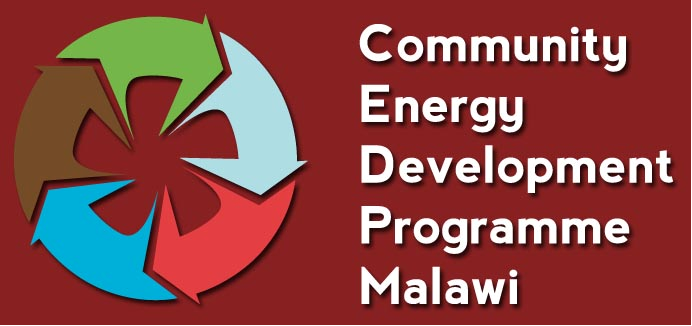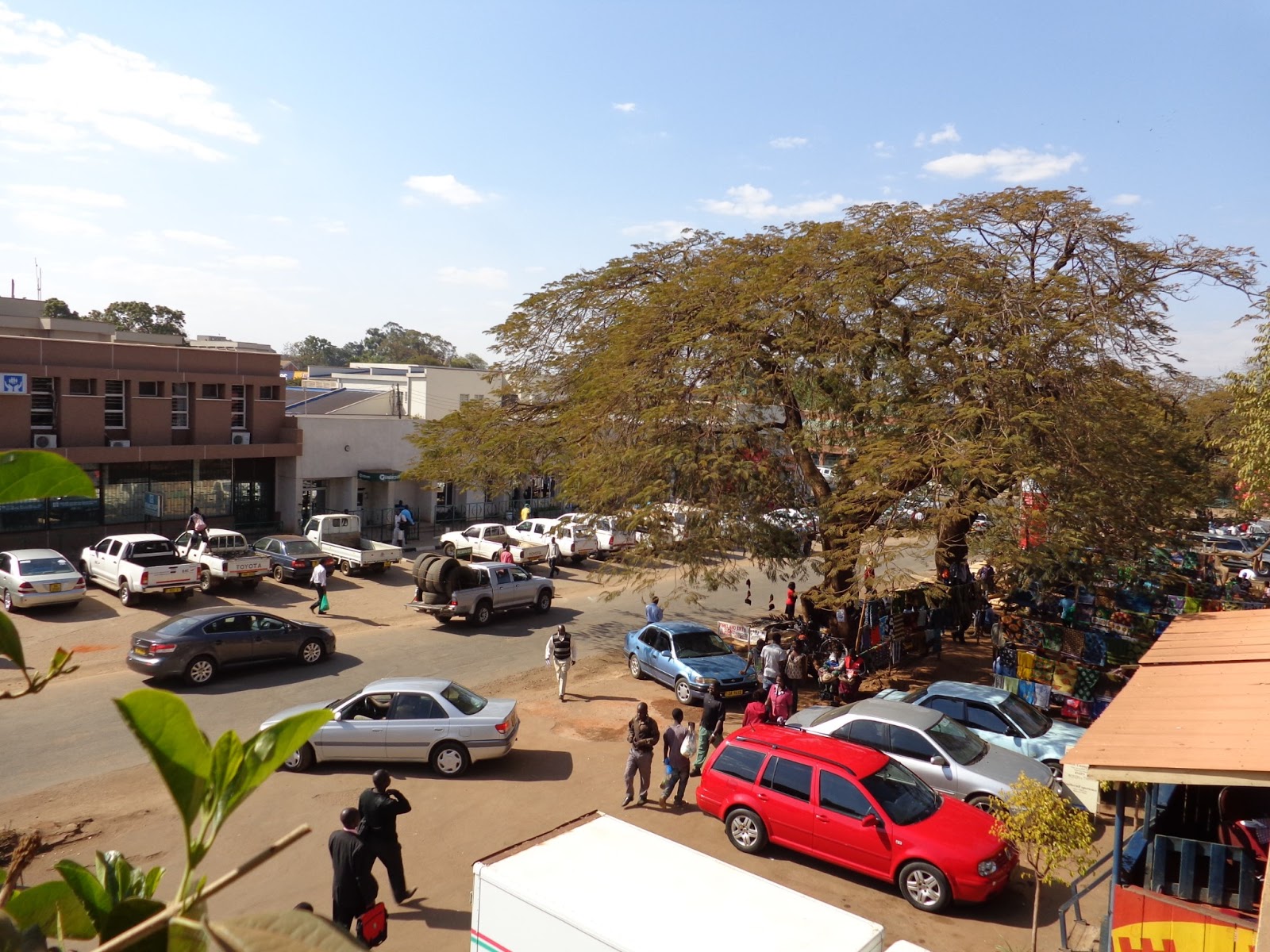On Friday, Mavuto had arranged for us to visit one of the Community Based Organisations (CBOs) - Umodzi (Yao for togetherness) in the community of Mpiranjala which the CEDP will be working with to develop a renewable energy project. Mpiranjala is in Machinga district, some 4 hours north east of Blantyre. The community lies close to Lake Chilwa, a designated RAMSAR site which has dramatically reduced in size in recent years due reduced rainfall in the surrounding area but is still internationally renowned for the wildlife there.
Travelling through Machinga district
At the welcome meeting (complete with new red CEDP t-shirt)
This was my first introduction to community meetings in Malawi and they follow a set protocol. The guests and figures of note from the host community sit in a group and a prayer to welcome everybody is said. There is then a round of introductions including who you are, where you are from and why you are there followed by an opportunity for both parties to ask questions. The atmosphere is very respectful and I was mindful that using particular body language and phrases were incredibly important.
Following introductions, we were shown around the community and Mavuto explained why this community had been selected to participate in the CEDP programme and what the community were hoping to achieve.
Inside one of the secondary school blocks. Even in the middle of a hot, sunny day it was quite dark inside the classroom
The community currently has several primary school blocks, two secondary school blocks, a teachers house and a health centre. Mavuto is supporting the community in their application for grant funding to install solar panels on these buildings (which buildings will ultimately receive the solar panels has not been decided). The community already has a small solar panel on the roof of one building in the health centre to provide electricity for a fridge which enables the centre to stock vaccines and other medicines which need to be refrigerated. The community are therefore already aware of the benefits of having solar panels in their community.
Solar panels for the fridge at the medical centre
Essential to the CEDP programme is the training which the DOs will carry out with the community before the installation of the technology. Training session topics will include leadership and group dynamics, renewable energy technologies, village savings and loans and CBO management. Groups will also be supported to develop ideas for revenue generation from the renewable installations. The idea being that an income from activities such as phone charging and selling drinks refrigerated by the solar panels can be used to pay for service and maintenance of the system. This particular community is looking at starting up a battery charging business (households often have small batteries which they use for household electricity but they currently have to cycle for over an hour to the nearest charging point).
The training sessions and support to develop a business idea around the renewable system is essential for the long term sustainability of the system. There is little merit in installing a system which the community does not have the capacity to manage, service and maintain themselves. Sadly I have heard of a number of examples where renewable technologies have been installed only to break after several months. Communities have often not had the training to fix the system nor the funds to employ somebody to come in and fix the system and so the system lies unused. This is the cycle which the CEDP is looking to break.
I was shown around the school blocks and the health centre. The community felt that if the primary school block could be fitted with a solar system for lighting, the 1066 children which attend would be able to study for longer into the evening and would hopefully achieve better grades. The head of the primary school described how they should have 14 teachers but they currently only have 9. Part of the reason for this is the lack of electricity at the school, some teachers arrive and only stay one week before deciding to go to another school which is better serviced. With the provision of electricity, the head teacher hopes that better quality teachers can be attracted to stay for longer at the school which again, will benefit the students.
I then visited the health centre which currently has no electricity for lighting. If somebody becomes sick at night, they must be seen to by candle light. I also visited the maternity block where there were a number of expectant mothers waiting to go into labour. Because some women live some distance from the centre, when their time is near they come to the maternity block and live in an accompanying building so that they can be closer to help when they go into labour.
The maternity unit. Soot marks from the candles used for lighting can be seen on the walls.
Currently, there is also no electricity in the maternity unit. If a woman goes into labour at night, she must give birth by candle light. Every expectant mother is told to save up enough money to buy 3 candles (which should provide enough light to see her through the night). The mums to be often cannot afford matches and so use embers from the fire to light their candles. This story in particular really struck a chord with me. I cannot imagine how difficult and scary it must be to give birth by candle light which will inevitably waver and go out if the weather is bad.
Expectant mothers with their candles in front of the maternity block
Demonstrating the need for embers to light their candles
Before leaving for Blantyre, we had a "closing" meeting where the community thanked us for coming and expressed their thanks for the CEDP programme and for all the help and support that Mavuto had given them so far. What struck me as we left the community was that this community could see the numerous benefits of installing solar panels in their village. I could see that from the work Mavuto has done with the community, they are already thinking long term about how they can manage the system to ensure it's longevity which is exactly what the CEDP is about.




















